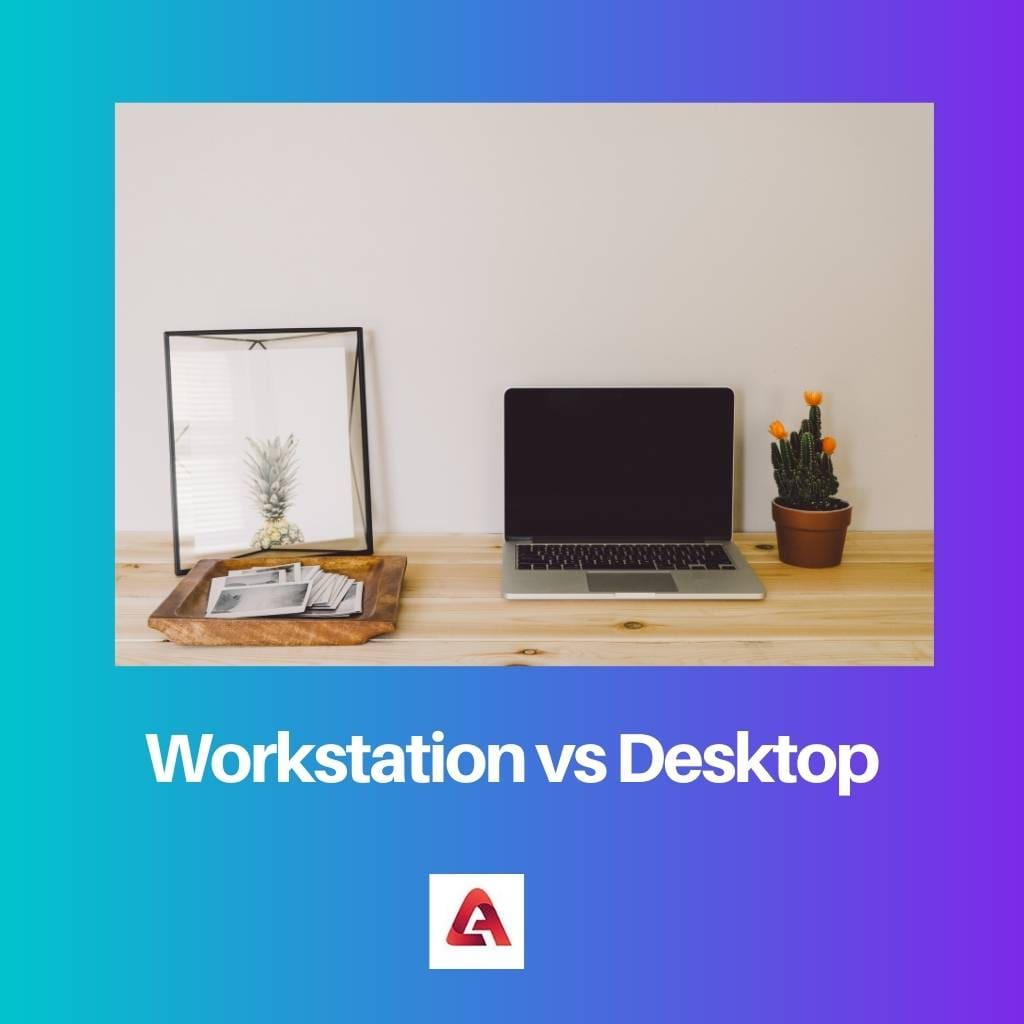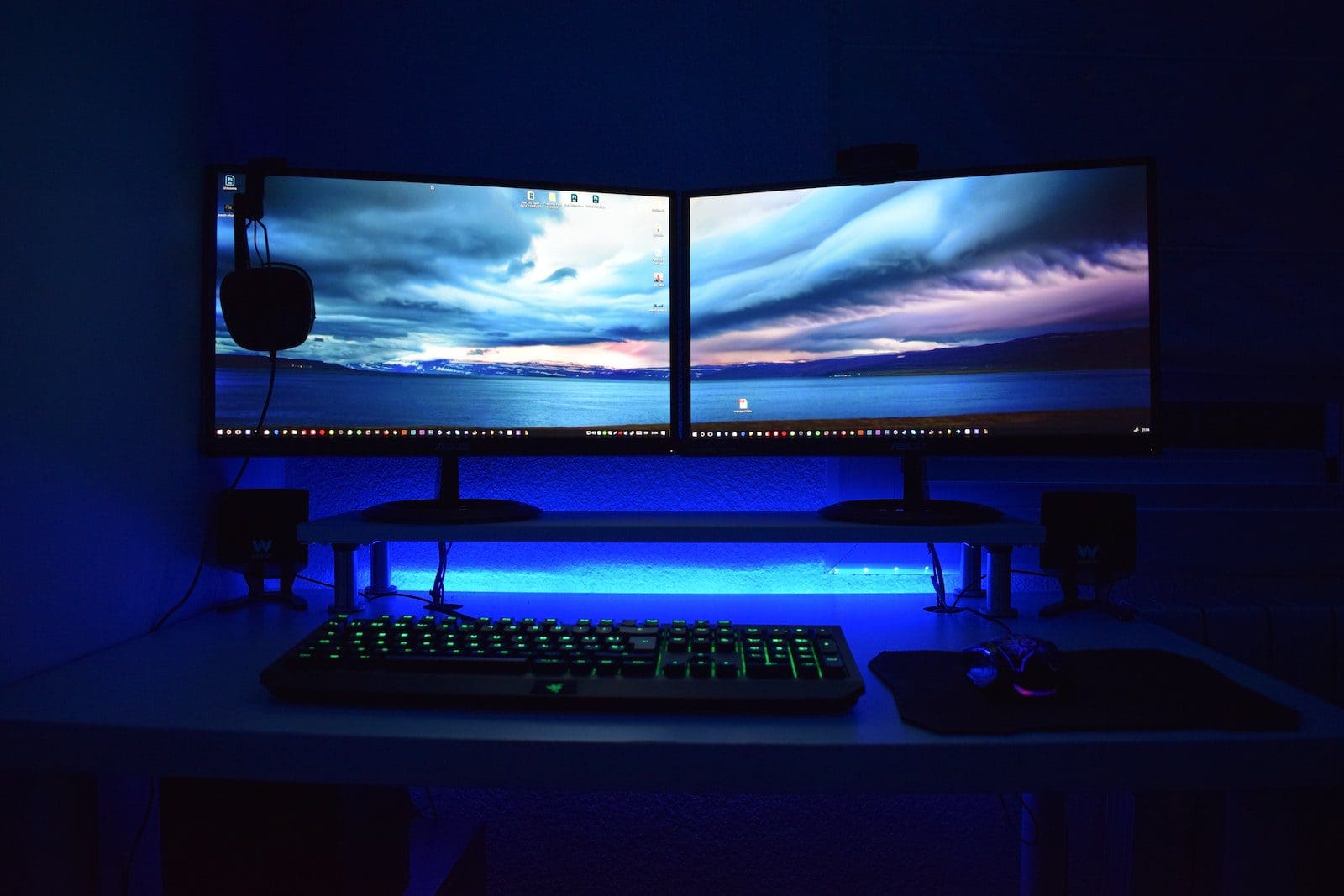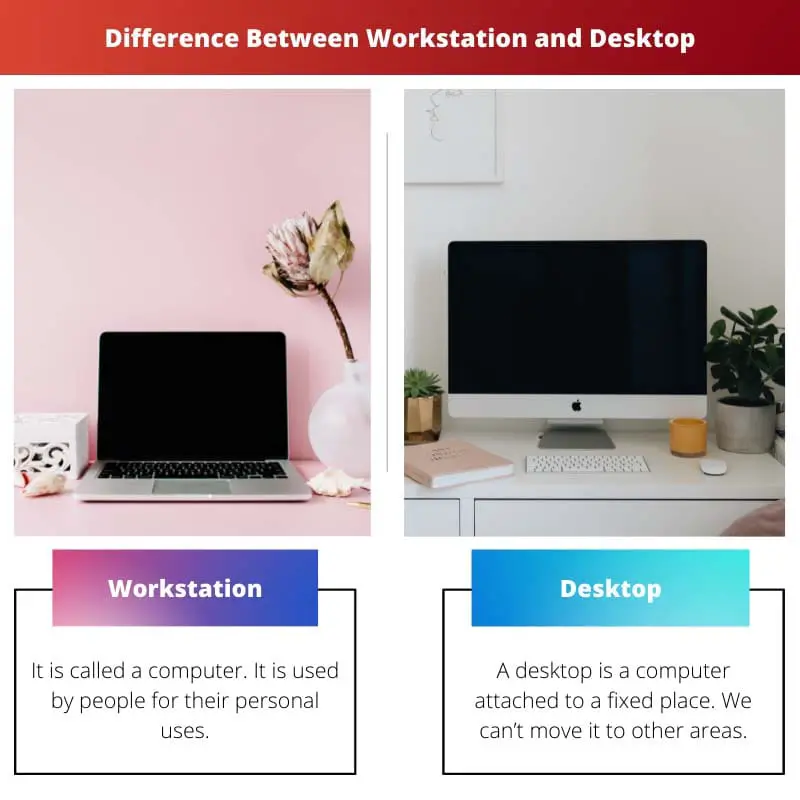In today’s world, everything is online-based. We need computers to perform each and every task. But for that, we need to learn the basics of computers and how they changed from year to year.
So that as a computer enthusiast we can learn many new things. Workstation and Desktop both ruled for many years, and it has many features.
Key Takeaways
- Workstations are specialized computers designed for professional use, such as engineering, graphic design, or scientific research, while desktop computers are general-purpose computers designed for personal use.
- Workstations have more powerful processors, more memory, and better graphics cards than desktop computers, which allows them to handle complex tasks more quickly and efficiently.
- Workstations are more expensive than desktop computers due to their specialized hardware and software, while desktop computers are more affordable and accessible to a wider range of users.
Workstation vs Desktop
The difference between a Workstation and a Desktop is that the workstation needs some specific parts, whereas the desktop can be placed anywhere without any hurdles. People hate this thing of a workstation as it generates higher noise due to the fan that rotates inside. It would be of great use to data scientists and engineers.

The workstation is mainly designed for a single person to use it. Nowadays, many workstations emerge as powerful modern desktops. But they are really very expensive, but it will be worth the price you pay when you access its features. In simple words, it is a higher-model desktop.
Whenever you turn on your computer, a picture will appear on your screen. This is called a desktop. Its main work is to make the taskbar and Windows sidebar appear on the screen.
On the front page of the desktop, you can add files and other apps that you want to use frequently so that you do not need to click the start button every time you need to open something.
Comparison Table
| Parameters of Comparison | Workstation | Desktop |
|---|---|---|
| Definition | Mainly used for technical problems. | It can be used by regular people. |
| Used by | Engineers, Animators | Web Developer, Game Developer |
| Price | Higher Price | Reasonable Price |
| Specifications | It has more specifications. | It has low specifications. |
| Performance | Higher | Higher |
What is Workstation?
In simple words, it is called a computer. It is used by people for their personal uses. The speed of the workstation is unbelievable when compared with others.
Small engineering companies designed this. It was developed when the UNIX operating system came into existence. Many corporate companies use workstations in their workplace.
Sometimes people call it a programmable workstation. These workstations are connected via local area networks called LANs. Since this is a personal one, people can install any kind of software and hardware without any discrepancies.
IBM introduced the first workstation. It became more popular during the 1980s as that was the time 32-bit microprocessors became more popular and successful.
But later in the 2000s, its popularity came down as it required high maintenance and cost, and most people could not afford it. Now, most people use Microsoft operating systems running on their laptops or PCs.
These were earlier called minicomputers. Because that was the time computers came into existence, and many people started to learn more about computers, programming languages, and their features in-depth.
However, they are very expensive because it has many features. It used to work with more speed which became the primary reason for its high cost, because of its high-cost, people used to ask for certificates from the buyers, which further led to more prices.

What is Desktop?
A desktop is a computer attached to a fixed place. We can’t move it to other areas. Even a kid nowadays knows the importance and the values of a desktop. It contains a Monitor, CPU, Mouse, and Speakers. It was more popular before the 2000s.
Its growth came to a halt when the laptop got introduced. Laptops do not require you to sit in a steady place like a desktop. You can take it with you wherever you go.
The main producer of desktops is the United States. The desktop can have as many icons as possible. If you buy a new computer, you can at least see a recycle bin icon on your desktop.
The desktop will even allow you to add shortcuts to your computer screen. The best part is if you don’t like any icon, you have the privilege to add and can remove the icons from your computer screen.
It has many features. When you study computer science, the first thing they will teach you is how to deal with the desktop.
It is a cool subject. Many students will be happy to learn it. One of the best things many learn is changing their computer screen’s wallpaper.
This feature can be performed only using a desktop. It even contains some in-built wallpapers, or you can add wallpaper of your preference.

Main Differences Between Workstation and Desktop
- The cost of the workstation is more because of its higher features and some advantages. On the other hand, the desktop can be a little less when compared with the workstation.
- Not everyone needs a workstation to perform in their workplace. Even some people who are using Microsoft and google docs can perform well without a workstation.
- When you work with both a workstation and a desktop, you can see the features some desktop lacks because the workstation uses higher hardware, making it more powerful.
- We can predict which is best for you only if you decide the type of application you are going to use for your work. Based on that, you can buy either of them.
- Workstations can come for long life when compared with desktops because of their stability.

- https://www.computer.org/csdl/proceedings-article/iccd/1992/00276298/12OmNzyp5YH
- http://i-rep.emu.edu.tr:8080/jspui/handle/11129/249

The article is quite informative and well-detailed in explaining the difference between workstations and desktops. The information provided is highly beneficial for anyone wanting to understand the subject matter.
Indeed, the knowledge shared in the article can serve as a foundation for further exploration into computer hardware and its uses.
The article delineates the unique features of workstations and desktop computers, providing an educational resource for readers. The historical insights add depth to the content, making it a compelling read for tech enthusiasts.
I appreciate the focus on historical development, as it offers an insightful perspective on the evolution of computer technology and its impact in various sectors.
The article provides an insightful comparison of workstations and desktops, touching on various aspects from specifications to historical development. The enriching content allows for a deeper understanding of the topic.
The comprehensive comparison and historical context make this article a valuable resource for anyone interested in computers and technology.
The article has mentioned valuable points about the difference between workstations and desktop computers. I especially appreciate the concise comparison table. Well-written!
I agree, the comparison table provides a clear summary of the main differences. It’s of great help for those who may be unfamiliar with these two types of computers.
The detailed examination of workstations and desktops, coupled with historical context, aids in providing a nuanced understanding of these computer types. The content is well-articulated and highly illuminating.
Agreed, the in-depth exploration of both computer types fosters a comprehensive grasp of their significance and applications in the technological landscape.
The article effectively conveys the differences between workstations and desktops, along with their respective uses and features. The comparison table presents a clear summation of the core dissimilarities.
Yes, the comparison table simplifies the complex differences between workstations and desktops into a lucid format, making it easier to comprehend.
This is a well-structured article that explains the differences between workstations and desktops quite comprehensively. The historical context that is provided is also informative.
Absolutely, the historical information provides a good context for understanding the evolution of these computer types over the years.
The clear explanation of the historical background and development of these computers helps in understanding their significance in the field of technology.
The article provides a clear distinction between workstations and desktops, offering valuable insights on the technical and practical aspects of these computers. It serves as an informative guide for understanding their key differences.
The well-structured comparison and insights provided in this article make it an exceptional resource for individuals seeking to enhance their knowledge of computer hardware.
Indeed, the article effectively communicates the complex differences between workstations and desktops, breaking down the technical aspects into easily understandable narratives.
The article offers a comprehensive overview of workstations and desktops, elucidating their varying specifications and historical significance. The information presented is immersive and enriching.
The detailed insights into workstations and desktops, backed by historical context, make this article a compelling source for individuals looking to delve into the intricate world of computer hardware.
I appreciate the depth of knowledge shared, making the article a valuable resource for anyone keen on understanding the evolution and differences between workstations and desktops.
The article effectively delves into the technical nuances of workstations and desktops, providing an educational platform for readers to enhance their understanding of these computer types. The historical background enriches the content further.
Absolutely, the detailed comparison and historical insights make this article a potent source for individuals seeking to bolster their knowledge of computers and technology.
The thought-provoking analysis of workstations and desktops, complemented by historical references, lends an engaging narrative that facilitates a deeper comprehension of these fundamental computer types.